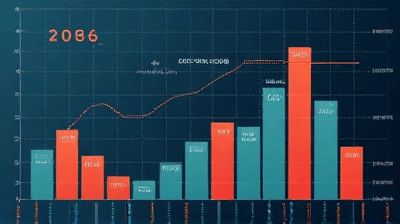How to Build a Recession-Proof Stock Portfolio in 2025

Economic uncertainty is a constant in financial markets, and in 2025, concerns about a potential recession are top of mind for investors. With rising interest rates, inflationary pressures, and geopolitical tensions, building a stock portfolio that can withstand economic downturns is crucial. A recession-proof portfolio minimizes losses during market declines while positioning you for growth when conditions improve.
Understanding the 2025 Economic Landscape
In May 2025, the global economy faces several challenges. The Federal Reserve has maintained interest rates between 5.5 and 6 percent to curb inflation, which hovers around 3 percent in the U.S. Supply chain disruptions and energy price volatility, driven by geopolitical events, are pressuring corporate earnings. Consumer spending is slowing in some sectors, and fears of a recession—defined as two consecutive quarters of negative GDP growth—are growing, with some analysts predicting a mild downturn by late 2025.
Despite these headwinds, opportunities exist. Certain industries thrive during recessions, and strategic investing can protect your portfolio. By focusing on stability, income, and long-term growth, you can build a portfolio that weathers economic storms.
Key Principles of a Recession-Proof Portfolio

A recession-proof stock portfolio is built on three core principles: diversification, stability, and risk management. These principles guide stock selection and allocation to minimize losses and maintain growth potential.
1. Diversification
Diversification reduces risk by spreading investments across different sectors, asset classes, and geographies. In 2025, a diversified portfolio might include stocks, bonds, and alternative assets like real estate investment trusts (REITs) to balance volatility.
2. Stability
Focus on companies with strong fundamentals—those with consistent earnings, low debt, and reliable cash flows. These businesses are less sensitive to economic cycles and can maintain performance during downturns.
3. Risk Management
Use strategies like stop-loss orders, position sizing, and regular portfolio reviews to limit losses. In 2025, with market volatility expected, proactive risk management is essential.
Strategies to Build a Recession-Proof Stock Portfolio
Below are seven strategies to construct a portfolio that can withstand a recession in 2025, with specific stock and sector recommendations based on current market conditions.
1. Invest in Defensive Sectors
Defensive sectors—industries that provide essential goods and services—tend to perform well during recessions because demand remains stable. In 2025, key defensive sectors include:
Consumer Staples: Companies like Procter & Gamble (PG) and Walmart (WMT) sell necessities like food, household goods, and personal care products. These firms maintain steady sales regardless of economic conditions.
Healthcare: Firms like Johnson & Johnson (JNJ) and Pfizer (PFE) benefit from consistent demand for medical products and services. In 2025, an aging population and ongoing healthcare needs make this sector resilient.
Utilities: Utility companies like NextEra Energy (NEE) provide essential services like electricity and water. Their regulated nature ensures stable cash flows, and many offer attractive dividends.
Action: Allocate 30 to 40 percent of your portfolio to defensive sectors. For example, a 100000-dollar portfolio might include 15000 dollars in PG, 10000 dollars in JNJ, and 10000 dollars in NEE.
2. Prioritize Dividend-Paying Stocks
Dividend stocks provide income during market downturns, cushioning losses and offering reinvestment opportunities. In 2025, with interest rates high, focus on companies with a history of stable or growing dividends, known as Dividend Aristocrats (companies that have increased dividends for 25+ years).
Examples: Coca-Cola (KO), with a 3 percent yield, and 3M (MMM), with a 2.5 percent yield, have strong track records. Their dividends provide income even if stock prices dip.
Considerations: Look for companies with payout ratios below 60 percent to ensure dividend sustainability. Avoid high-yield stocks (above 6 percent) with weak fundamentals, as they may cut dividends in a recession.
Action: Include 20 to 30 percent of your portfolio in dividend stocks. Reinvest dividends to compound returns or use them as income during market dips.
3. Focus on Low-Debt Companies
Companies with low debt-to-equity ratios are better equipped to handle economic downturns, as they rely less on borrowing in a high-interest-rate environment. In 2025, with borrowing costs elevated, low-debt firms are less vulnerable to rising rates.
Examples: Microsoft (MSFT), with a debt-to-equity ratio of 0.2, and Apple (AAPL), with a ratio of 0.5, have strong balance sheets and ample cash reserves. These tech giants remain stable despite market volatility.
Screening: Use tools like Yahoo Finance or Finviz to filter for companies with debt-to-equity ratios below 0.5 and positive free cash flow.
Action: Allocate 20 to 25 percent to low-debt blue-chip stocks. A 100000-dollar portfolio might include 10000 dollars in MSFT and 10000 dollars in AAPL.
4. Diversify Across Asset Classes
Stocks alone can’t fully protect against a recession. In 2025, complement your equity holdings with bonds, REITs, or gold to reduce volatility.
Bonds: Treasury bonds or investment-grade corporate bonds offer stability. In 2025, 10-year Treasury yields around 4 percent provide a safe income stream.
REITs: Real estate investment trusts like Realty Income (O) offer monthly dividends and exposure to real estate without direct property ownership.
Gold: ETFs like SPDR Gold Shares (GLD) hedge against inflation and market uncertainty.
Action: Allocate 10 to 20 percent to non-stock assets. For example, a 100000-dollar portfolio might include 10000 dollars in bonds and 5000 dollars in REITs.
5. Use Dollar-Cost Averaging (DCA)
DCA involves investing a fixed amount regularly, reducing the risk of buying at market peaks. In 2025, with volatility expected, DCA helps smooth out purchase prices.
How it works: Invest 500 dollars monthly in an S&P 500 ETF like Vanguard’s VOO. If the market dips, you buy more shares at lower prices, lowering your average cost.
Platforms: Use brokers like Fidelity or Charles Schwab for low-cost, automated DCA plans.
Action: Set up a DCA plan for 20 to 30 percent of your monthly investment budget, focusing on broad-market ETFs or defensive stocks.
6. Incorporate Index Funds and ETFs
Index funds and ETFs provide broad market exposure, reducing the risk of individual stock failures. In 2025, low-cost funds tracking the S&P 500 or defensive sectors are ideal.
Examples: The SPDR S&P 500 ETF (SPY) offers diversified exposure to large-cap U.S. stocks, while the iShares U.S. Consumer Staples ETF (IYK) focuses on recession-resistant sectors.
Benefits: Low expense ratios (0.03 to 0.2 percent) and built-in diversification make ETFs cost-effective.
Action: Allocate 20 to 30 percent to index funds or ETFs. A 100000-dollar portfolio might include 15000 dollars in SPY and 10000 dollars in IYK.
7. Implement Risk Management Techniques
Protect your portfolio with strategies to limit losses during a recession.
Stop-loss orders: Set automatic sell orders at 10 to 15 percent below purchase prices to cap losses.
Position sizing: Limit any single stock to 5 percent of your portfolio to avoid overexposure.
Regular rebalancing: Review your portfolio quarterly to maintain your target allocation, selling overperforming assets and buying underperforming ones.
Action: Use a brokerage platform with robust tools (e.g., TD Ameritrade) to set stop-loss orders and monitor allocations.
Sample Recession-Proof Portfolio for 2025

Here’s a hypothetical 100000-dollar portfolio designed for resilience in 2025:
Defensive Stocks (35 percent): 15000 dollars in PG, 10000 dollars in JNJ, 10000 dollars in NEE.
Dividend Stocks (25 percent): 15000 dollars in KO, 10000 dollars in MMM.
Low-Debt Stocks (20 percent): 10000 dollars in MSFT, 10000 dollars in AAPL.
ETFs (15 percent): 10000 dollars in SPY, 5000 dollars in IYK.
Bonds/REITs (5 percent): 5000 dollars in Treasury bonds.
This portfolio balances income, growth, and stability, with a focus on recession-resistant sectors and diversified assets.
Risks to Consider in 2025
While a recession-proof portfolio reduces risk, no strategy is foolproof. Key risks include:
Prolonged Downturn: A severe recession could depress even defensive stocks, reducing returns.
Interest Rate Hikes: Higher rates could pressure dividend stocks and REITs, which are sensitive to borrowing costs.
Geopolitical Shocks: Unexpected events, like trade wars or conflicts, could disrupt markets.
Mitigate these risks by maintaining an emergency fund (3 to 6 months of expenses), avoiding leverage, and staying informed via platforms like Bloomberg or X.
Tools and Resources for 2025

Leverage these tools to build and manage your portfolio:
Yahoo Finance: Track stock performance and financial metrics.
Finviz: Screen for low-debt, high-dividend stocks.
Morningstar: Analyze ETFs and mutual funds for fees and performance.
Brokerage Platforms: Use Fidelity, Schwab, or Robinhood for low-cost trading and portfolio tools.
Case Study: Building a Portfolio in 2025
Consider Sarah, a 40-year-old investor with 100000 dollars to invest. Concerned about a potential recession, she allocates her portfolio as follows:
20000 dollars in consumer staples (PG, WMT).
20000 dollars in healthcare (JNJ, PFE).
15000 dollars in utilities (NEE).
20000 dollars in dividend stocks (KO, MMM).
15000 dollars in ETFs (SPY, IYK).
10000 dollars in bonds and 5000 dollars in REITs (O).
Sarah uses DCA, investing 2000 dollars monthly, and sets stop-loss orders at 10 percent below purchase prices. By mid-2025, her portfolio yields 3000 dollars annually in dividends and grows 5 percent, outperforming the market during a mild downturn. Her diversified approach minimizes losses and positions her for recovery.
Conclusion
Building a recession-proof stock portfolio in 2025 requires a focus on defensive sectors, dividend-paying stocks, low-debt companies, and diversified assets. Strategies like DCA, ETF investments, and risk management techniques enhance resilience. By allocating capital to stable industries, maintaining a balanced portfolio, and staying proactive, investors can navigate economic uncertainty with confidence. While risks remain, a well-constructed portfolio can protect wealth and capitalize on opportunities in the 2025 market.